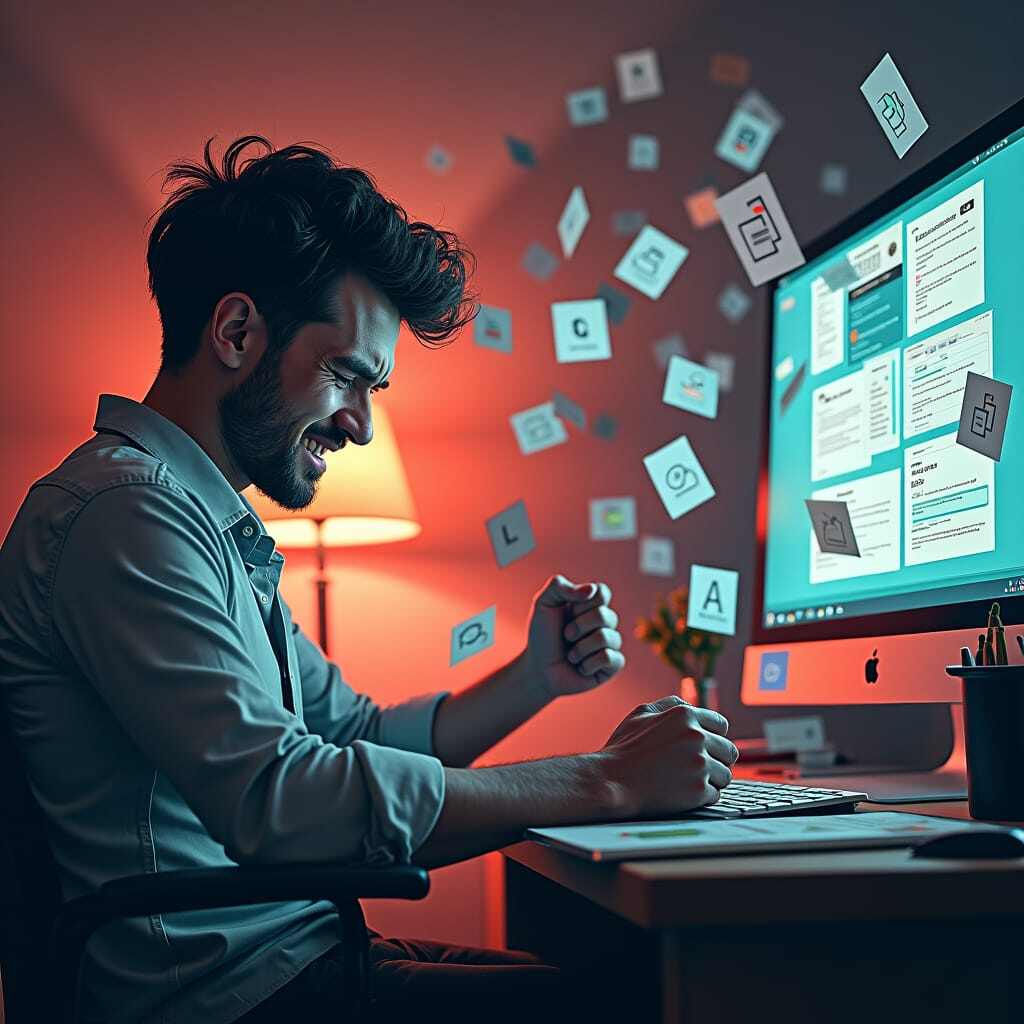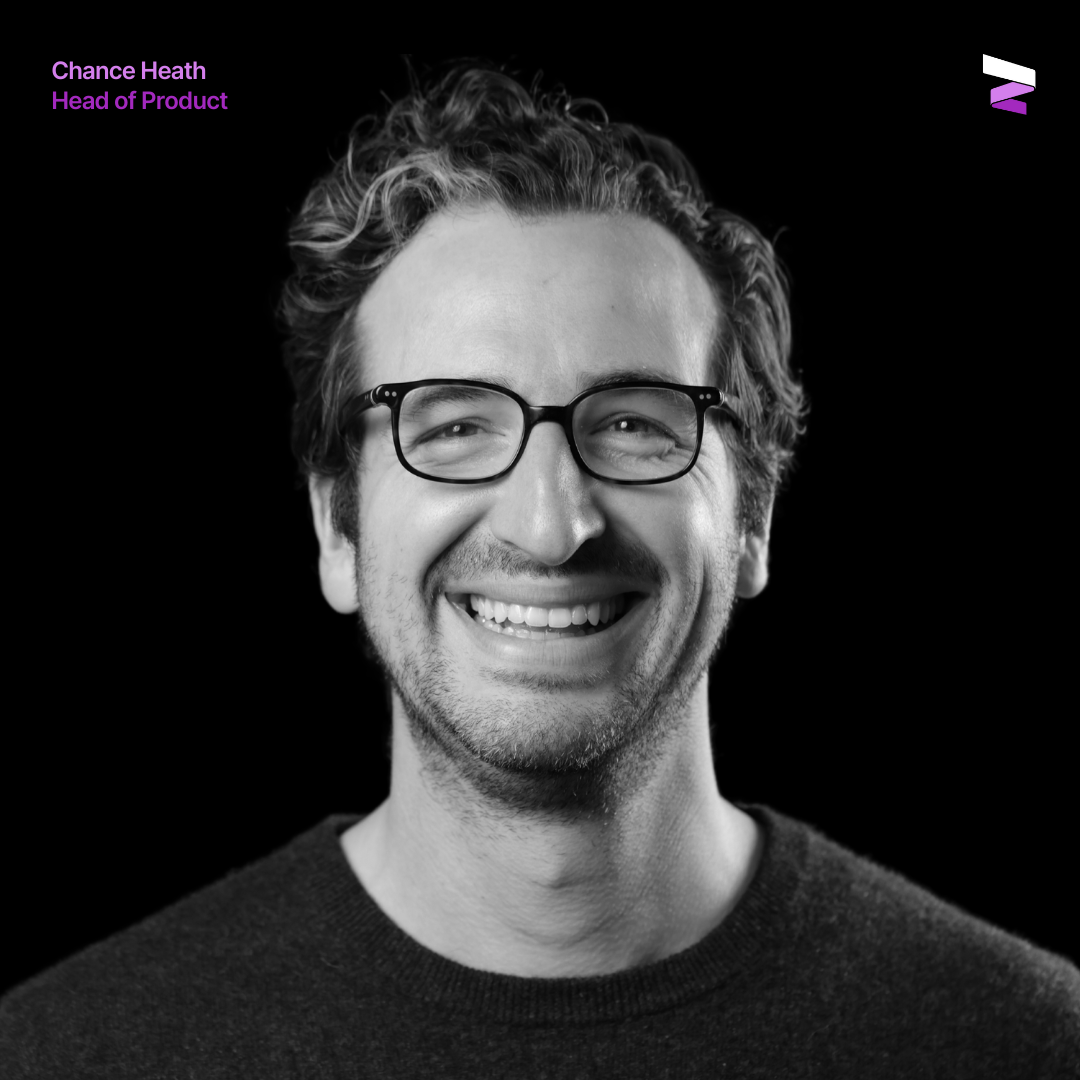In our relentless pursuit of productivity, we find ourselves searching for that perfect tool - that one app that promises to streamline workflows, enhance collaboration, and finally bring order to the chaos of our digital work lives.
Tools like Monday.com, ClickUp, and Notion have risen to the challenge, offering a bunch of features designed to help us manage tasks, projects, and communications all in one place.
But despite the innovations these tools bring, a fundamental issue still exists - no single productivity tool can solve our workflow and collaboration problems.
It’s impossible.
Why?
Not because the tools aren’t good. Actually, they’re usually pretty cool.
But because the problem isn’t in the tools themselves, it's in the very digital environment within which they operate.
The Invisible Constraints of Our Digital World
We work within a construct that is deeply rooted in the past. The Graphical User Interface (GUI) systems that underpin our desktops were originally designed to solve computer science problems - how to manage files, run multiple programs simultaneously, and make computers more user-friendly.
Even though these advancements were huge at the time, they were never designed with human productivity as their primary focus. They were focused on managing technical resources, like databases and processes, within a rigid framework.
Today, how our computers function (the GUI) has become an invisible constraint - a construct we rarely question.
We’ve become so accustomed to the way our digital workspaces operate that we assume this is simply how things have to be. So we pour our efforts into building or finding better tools and integrating more apps, all in the hope of optimizing our workflows.
But all of these efforts, all of these apps, even though useful, are ultimately hacks. They’re workarounds within a system that was never designed to support human productivity. Or human growth.
The Struggle Within the Construct
This type of struggle is nothing new. It mirrors the personal growth challenges we face in our lives. Just like we operate within the constraints of our digital environments without questioning them, we also operate within the constraints of our own limiting beliefs - beliefs that we often don’t even realize are holding us back.
For example, if you have an underlying belief that you’re not good enough to make a team, get hired for a certain position, or earn a specific amount of money, then everything you think, feel, and do, will be confined within that belief. You're just not good enough.
You might take courses on confidence, read books on financial success, or even make some changes in your life, but they will all be incremental. Your life won’t change, won’t shift, won’t transform unless you see and remove the artificial constraints you’ve placed on yourself. Once you do that, everything naturally changes - your thoughts, your feelings, and your behaviors. There’s a total and complete paradigm shift.
This concept takes me back to the 80’s, when the character Sarah Williams (Jennifer Connelly) in the movie Labyrinth initially felt trapped in the labyrinth because all she saw were endless walls with no exit in sight. In reality, there were gaps and spaces between the walls that allowed her to escape the labyrinth, but she couldn’t see them because she was operating under the assumption that the walls were continuous and unbroken. Her frustration stemmed from the hidden constraints that she assumed were part of her reality, but really weren’t.
Similarly and more recently, the Netflix series Altered Carbon (about a futuristic world where our consciousness can be digitized and stored) explored the concept of breaking free from a construct designed to limit one’s potential. In one memorable scene, a mentor (Quellcrist) helps her mentee (Kovacs) escape a virtual construct created by his enemies.
The mentor’s advice was to “Remember only one thing…your enemy is not the interrogator. Your enemy is despair. They control the construct. Wait, find the weakness in your enemy, and then get to the next screen…TAKE CONTROL OF THE CONSTRUCT.” This powerful message stuck with me. It underscores the idea that true transformation occurs when we recognize that the constraints we operate within are not immutable - they are artificial, and they can be changed.
So this is nothing new. It’s core to how we live.
And it also plays out in our digital work environments - we too often accept the limitations imposed by the current system. We toggle between dozens of apps, manage information across multiple platforms, and continually patch together fragmented workflows.
We’ve become so good at working within the system that we rarely question the system itself.
This is the invisible constraint - the construct we have yet to fully see, let alone break free from.
Seeing the Construct for What It Is
To truly revolutionize the way we work, we must first see the construct for what it is - a system designed to manage technical resources rather than human-centric outcomes. A system that has a bunch of apps that exist in silos.
Like our founder and CEO, Jeff Szczepanski (Tall Jeff) mentioned in his article featured in Hackernoon, our current digital environments require us to adapt to rigid structures that do not naturally fit our cognitive processes. Instead of aligning with how we think and work, these systems force us to manage tasks in ways that are often counterintuitive and fragmented.
This misalignment creates a constant cognitive load. We juggle multiple apps, try to maintain focus while switching contexts, and expend significant mental energy just keeping our tools aligned with our goals.
We are overwhelmed by the need to manage too many apps, which leads to decreased productivity and increased frustration.
This survey found that nearly half of its respondents believe they switch between too many apps just to get basic work done - a clear indication that the current system is not serving our needs.
Breaking Free With a New Approach to Our Digital Workspace
Just as we saw in personal development and in Labyrinth, and Altered Carbon, the key to breaking free lies not in fighting or finding better tools within the current system but in totally reimagining the system itself - a system with the contextual awareness to gather the scattered information from our apps and minds, transforming them into an organized, coordinated whole.
Instead of building more tools that operate within the constraints of the current GUI, we need to create a new environment - one that is anchored by a central protocol designed around human centric elements of outcomes, priorities, and time allocation.
Imagine a digital workspace where apps don’t just integrate, they share and act on contextual information in real-time, without the need for manual input. This would create a seamless, intuitive, organized work environment where the tools adapt to your needs, not the other way around.
Imagine this environment having all your favorite tools, giving you the right ones, with the right information at the right time. Not only would such an environment reduce your cognitive load, but it would also allow for a level of productivity, creativity, and human capacity that is frankly impossible today.
The future of work should not be about incremental gains in productivity achieved by adding more tools. It should be about creating environments that align with human cognition and creativity, enabling us to focus on what truly matters. This shift is not just about making work easier - it’s about fundamentally transforming how we interact with technology and how technology supports our work.
The Future of Work is an Organized Work Environment
The pursuit of the perfect productivity tool is ultimately a pursuit of a more efficient and effective way to work. But as long as we continue to operate within the confines of the current digital environment, we will never achieve true productivity.
The tools we use today, while helpful, are still rooted in a system that was never designed to optimize human-centric work.
The only way to catapult ourselves into true change, true productivity, and true human capacity is by breaking free of the construct.
We must change it on a fundamental level. This means moving beyond the traditional GUI, beyond the artificial constraints that have held us back, and creating a new environment - an Organized Work Environment (OWE) - designed with human outcomes in mind. One that introduces contextual awareness and does away with application silos.
In this new environment, the myth of the perfect productivity tool will be laid to rest.
Instead, we’ll find that true productivity comes not from the tools themselves, but from the environment within which they operate.
An environment that is intuitive, efficient, and capable of adapting to the complex, ever-changing nature of human tasks and collaboration.
This is the future of work, and it’s time we took control of the construct to make it a reality.
Join us on this journey and sign up to get early access to Reframe's Organized Work Environment.




